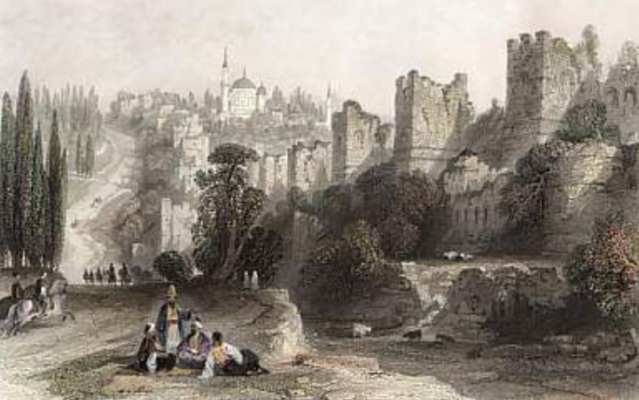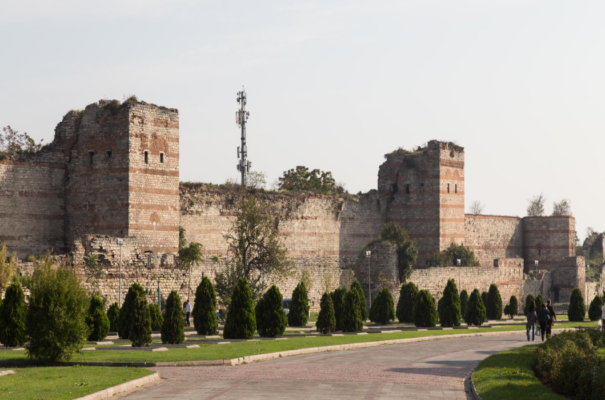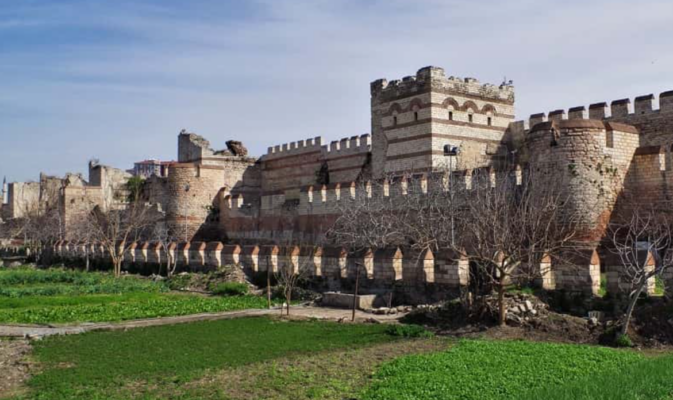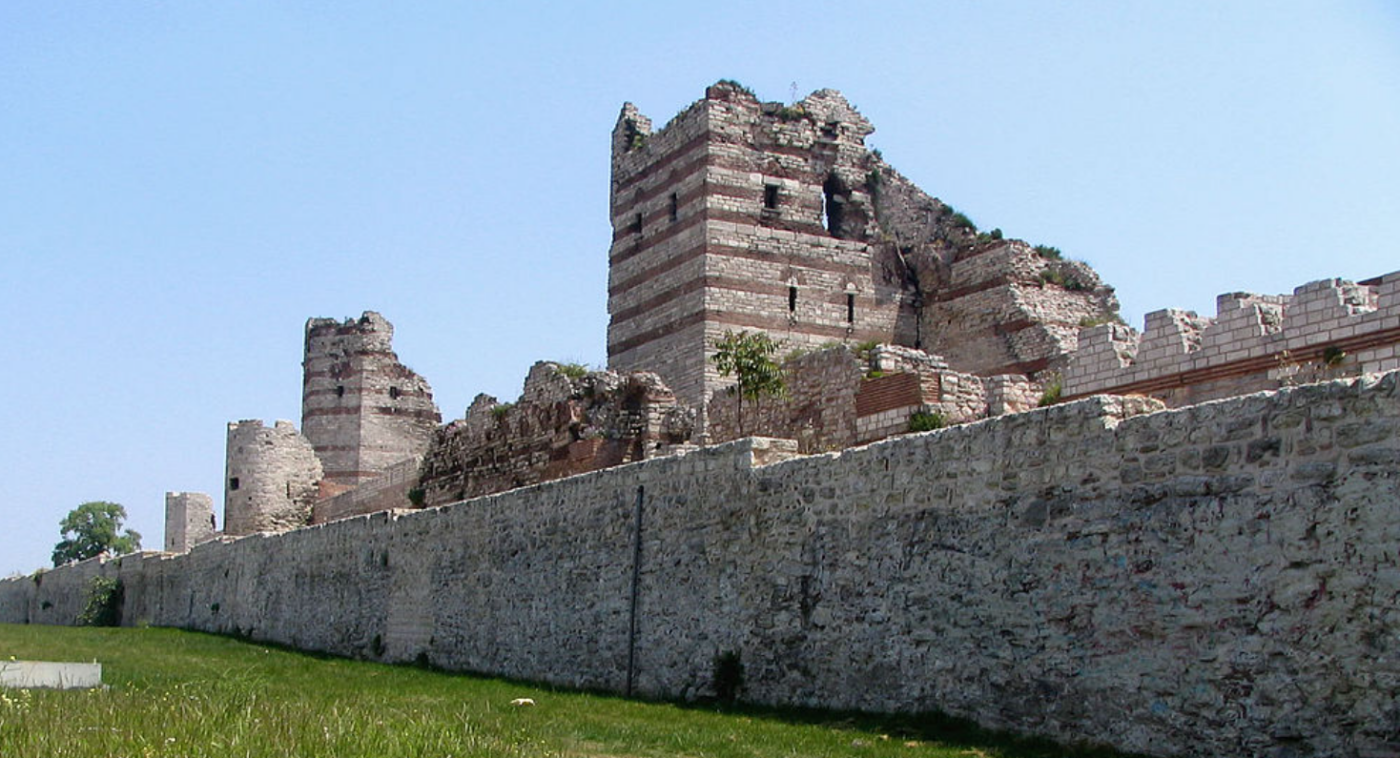The Walls of Constantinople, constructed during the Byzantine Empire, are among the most impressive fortifications in history. By the 1950s, these ancient walls had become a symbol of resilience, showcasing layers of history while grappling with the challenges of modern preservation. Let’s explore this ancient wall with archeology.dulichvn.net
Rediscovering the Walls in the 1950s
A Window Into Byzantine Engineering
The Walls of Constantinople, originally constructed during the 4th and 5th centuries AD under Emperor Theodosius II, stand as enduring marvels of ancient engineering. These imposing fortifications were designed with layered construction techniques using stone, brick, and mortar, showcasing the ingenuity of Byzantine architects.

By the 1950s, historians and archaeologists had turned their focus to these ancient structures, seeking to understand how they had endured centuries of challenges, including relentless invasions, destructive earthquakes, and the natural wear of time. Their design not only provided physical protection but also embodied the architectural brilliance of a civilization striving for both functionality and resilience.
The Role of the Walls in Post-War Istanbul
Following World War II, Istanbul was a city in transition, undergoing rapid modernization and urban redevelopment. Amid these changes, the Walls of Constantinople remained a steadfast reminder of the city’s deep historical roots. As the urban landscape evolved, these ancient fortifications symbolized continuity, bridging the gap between Istanbul’s modern identity and its legacy as Constantinople—the epicenter of Byzantine cultural and political power. Their towering presence served not only as physical landmarks but also as cultural touchstones, reminding residents and visitors alike of the city’s rich and layered history.

Preservation Efforts in the 1950s
The mid-20th century marked a turning point in recognizing the historical importance of the Walls of Constantinople. By the 1950s, both the Turkish government and international experts acknowledged the need for preservation. Despite being weathered by time and partially damaged in sections, the walls captivated historians and conservationists, who saw them as irreplaceable testaments to the past. Initial restoration efforts focused on stabilizing deteriorating sections to prevent further collapse. These early interventions laid the groundwork for more comprehensive preservation projects in subsequent decades, ensuring that this architectural and historical treasure would continue to inspire future generations.
See more: The Unexpected Find After Pulling Down a False Wall in a 1857 House: Discovering Hidden History
The Cultural Impact of the Walls: A Legacy of Resilience and Heritage
Symbol of Resilience
By the 1950s, the Walls of Constantinople had become a powerful symbol of Istanbul’s enduring spirit. Surviving centuries of conquests, natural disasters, and urban transformation, the fortifications embodied resilience—not just in their physical structure but in the cultural identity of the city and its people. For Istanbul’s residents, the walls represented the strength to endure and adapt through the ages, mirroring the city’s journey from Byzantium to Constantinople and ultimately Istanbul.

A Connection to Byzantium
As a tangible remnant of the Byzantine Empire, the walls served as a direct link to Constantinople’s golden age. Their grandeur and historical significance reminded locals and visitors alike of the city’s former prominence as the capital of one of the most influential empires in history. For scholars, historians, and medieval enthusiasts, the walls were not merely architectural marvels but also vital cultural artifacts that offered insight into Byzantium’s social, military, and urban advancements.
Inspiring Local and Global Awareness
The prominence of the walls in the mid-20th century sparked renewed interest in Istanbul’s rich history. Locally, they became a source of pride for residents, symbolizing their city’s unique place at the crossroads of civilizations. For tourists, the walls emerged as an essential landmark, drawing thousands eager to witness firsthand the monumental defenses that had shaped the course of history. This growing attention helped foster a deeper appreciation of Istanbul’s heritage, both within Turkey and on a global scale.
See more: Janjira Fort: The Undefeated Stronghold of Indian Maritime History
The State of the Walls Today: Bridging Past and Present
Evolving Preservation Techniques
Since the 1950s, the preservation of the Walls of Constantinople has benefited from advancements in restoration methods. Engineers and conservationists have employed modern technologies and materials to address structural weaknesses, ensuring these ancient fortifications remain intact for future generations. Innovations in heritage management have also allowed for more sustainable approaches to maintaining the integrity of this historical site.

A UNESCO World Heritage Site
The inclusion of the Walls of Constantinople in the Historic Areas of Istanbul UNESCO World Heritage designation underscores their universal significance. This recognition highlights not only their historical and architectural value but also the imperative of ongoing preservation. It ensures that the walls remain a global treasure, protected and celebrated as a key part of Istanbul’s cultural identity.
A Testament to Timeless Legacy
Today, the Walls of Constantinople continue to captivate the imagination of people worldwide. From their original role as formidable defenses to their current status as a cultural and historical landmark, the walls stand as a testament to the enduring legacy of Istanbul. They symbolize the city’s unique ability to preserve its past while embracing the future, making them an unmissable feature of Istanbul’s rich and layered history.
Conclusion
The Walls of Constantinople in the 1950s marked a turning point in their history, blending their ancient legacy with the challenges of modern preservation. Today, they remain a cornerstone of Istanbul’s identity, bridging the past with the present and standing as a testament to the resilience of both the city and its people.


CÁC TIN KHÁC
Mary Walton: The Forgotten Inventor Who Helped Clean Up America’s Cities
Tomb of Queen Nefertari in the Valley of the Queens, Egypt
Discover the Hypostyle Hall of the Temple of Hathor at Dendera
Venus de Losange: Unveiling the Mystery of a 20,000-Year-Old Paleolithic Icon